Barry

TV-MA, 2018–2023, Comedy/Crime, 30m
Table of Contents
What Is Barry About?
A hitman discovers his love for acting while on a job and struggles to balance his criminal past with his newfound passion.
Why You Should Watch Barry
Barry is a stunning television series that manages to blend elements of comedy, drama, and action into a unique and captivating viewing experience. From its exceptional writing to its outstanding performances and stunning cinematography, the show is a true masterpiece of modern television.

Barry is a character study of its eponymous protagonist, played brilliantly by Bill Hader. Hader brings a depth and nuance to the role that makes it easy to empathize with the character, despite his violent past and questionable present. Throughout the show, we see Barry struggle with his desire to leave his life of crime behind and his newfound passion for acting. The tension between these two conflicting desires is one of the driving forces of the show, and Hader’s performance brings this tension to life in a way that is both nuanced and affecting.
But Hader is not alone in his exceptional performance. The show’s supporting cast is equally impressive, with standout performances from Stephen Root as Barry’s mentor, Henry Winkler as his acting coach, and Sarah Goldberg as his love interest. Each of these characters brings a unique perspective and personality to the show, and their interactions with Barry help to flesh out his character in a way that feels both authentic and compelling.

One of the things that sets Barry apart from other shows is its unique blend of genres. On the one hand, the show is a dark comedy that is often hilarious in its absurdity and irreverence. But on the other hand, the show is also a tense drama that is not afraid to explore difficult themes and push the boundaries of what is acceptable on television. This blend of genres is handled masterfully by the show’s creators, who manage to create a tonal balance that is both consistent and dynamic.
Another striking feature of Barry is its masterful use of pacing and structure. Each episode strikes a perfect balance between moments of intense action and quieter, character-driven scenes. This careful modulation keeps the audience engaged without ever feeling rushed or drawn out. The episodic arcs feed seamlessly into the broader narrative, creating a cohesive and satisfying viewing experience. Moments of suspense are interspersed with well-timed comedic relief, ensuring that the tone remains dynamic and unpredictable. This tight pacing is a testament to the creators’ storytelling prowess, making Barry not only a captivating series but also one that consistently keeps viewers on their toes.
Perhaps the most impressive aspect of Barry, however, is its writing. The show’s creators, Alec Berg and Bill Hader, have crafted a series that is both tightly plotted and emotionally resonant. The show’s storylines are meticulously constructed, with each episode building upon the last in a way that feels both organic and surprising. The show’s dialogue is also exceptional, with each character speaking in a distinct and memorable voice.

Barry is a must-see television series that is sure to captivate viewers with its exceptional writing, performances, and visuals. The show’s unique blend of comedy, drama, and action makes it a standout in the crowded landscape of modern television, and its nuanced exploration of complex themes sets it apart as one of the most thought-provoking and emotionally impactful shows of recent years. If you haven’t watched Barry yet, you’re missing out on one of the best shows of the decade.
The Theme of Barry
One of the key themes of Barry is the cyclical nature of violence. Throughout the show, we see characters engage in acts of violence that have far-reaching consequences, both for themselves and for those around them. Barry himself is a prime example of this, as he struggles to reconcile his desire for a normal life with the violence that he has committed in his past. The show also explores the ways in which violence can become normalized, both within individual characters and within society as a whole.
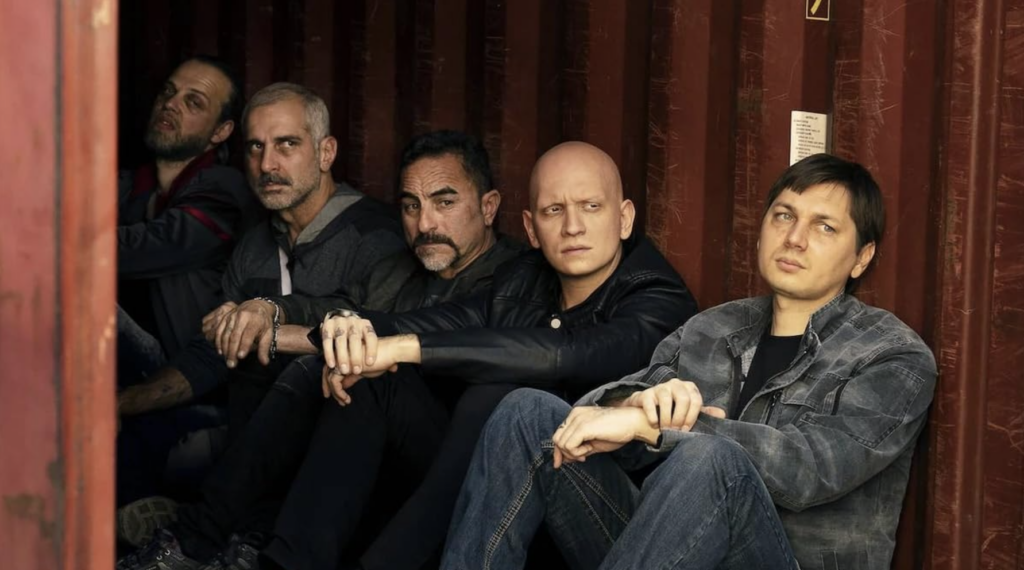
Another important theme of Barry is the search for identity. Throughout the show, we see characters struggling to define themselves and to understand their place in the world. Barry, in particular, is torn between his desire to be a good person and his knowledge of the terrible things he has done. He is constantly searching for a way to reconcile these conflicting impulses and to find a sense of purpose in his life.
The theme of the search for meaning is closely related to the theme of identity in Barry Many of the characters in the show are searching for a sense of purpose or fulfillment in their lives, whether it is through acting, crime, or other pursuits. This search for meaning is often complicated by the violence and chaos that surrounds the characters, as they struggle to find a sense of order and stability in a world that seems to be constantly in flux.
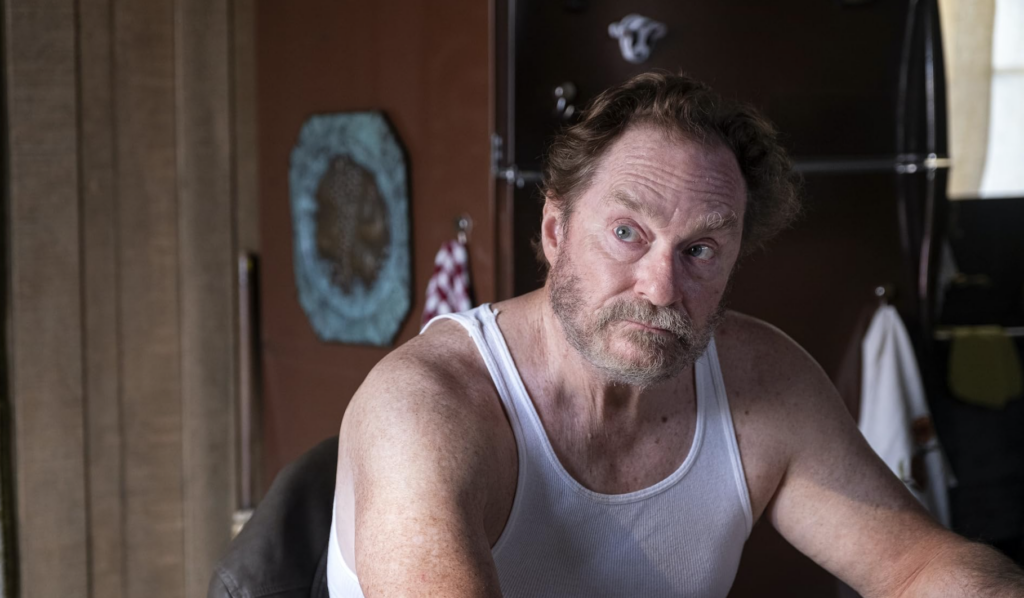
Another important theme of Barry is the nature of performance. Throughout the show, we see characters engaging in various forms of performance, from acting to crime to everyday social interactions. The show explores the ways in which performance can be both empowering and limiting, and how it can be used to mask or reveal different aspects of one’s identity.
Lastly, Barry also explores the theme of morality and ethics. The show raises important questions about the nature of right and wrong, and the extent to which individuals can be held responsible for their actions. Many of the characters in the show are grappling with moral and ethical questions, as they try to navigate the complex moral landscape of their lives.

The Cinematography of Barry
The cinematography in Barry is characterized by its use of a naturalistic, hand-held camera style that captures the gritty, often violent world of the show’s hitman protagonist. The camera work is generally unobtrusive, allowing the actors and the story to take center stage, but it also employs certain techniques to help convey the emotional tone of the scenes.
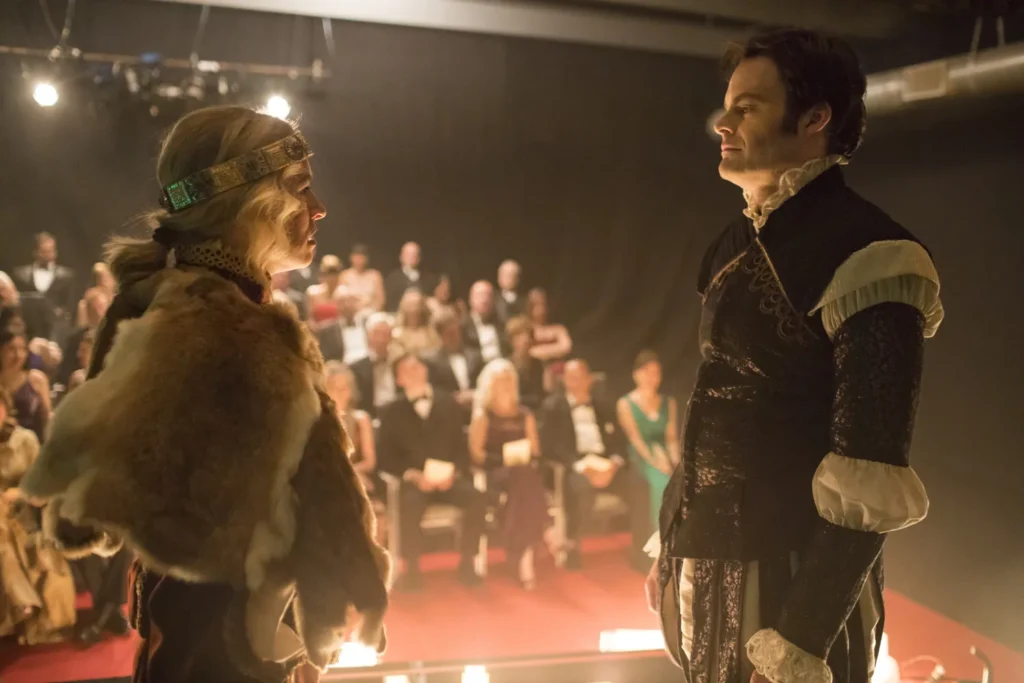
One of the most striking visual elements in Barry is its use of lighting. The show often employs a high-contrast lighting style, with bright pools of light surrounded by deep shadows. This creates a sense of visual tension that underscores the dark themes of the show.
Another important element of the cinematography in Barry is the way it uses framing and camera movement to convey the shifting emotional states of the characters. For example, in scenes where Barry is feeling uneasy or uncertain, the camera might be positioned low to the ground or at an angle, creating a sense of unease and instability. Conversely, in scenes where he feels more confident or in control, the camera might be positioned at eye level, creating a sense of stability and power.

The Soundtrack of Barry
The soundtrack to Barry is a crucial component of the show’s overall aesthetic, and it plays a key role in creating the show’s distinctive atmosphere. The show features a wide range of musical styles, including everything from classical music to punk rock, and the soundtrack is carefully curated to match the tone of each scene.
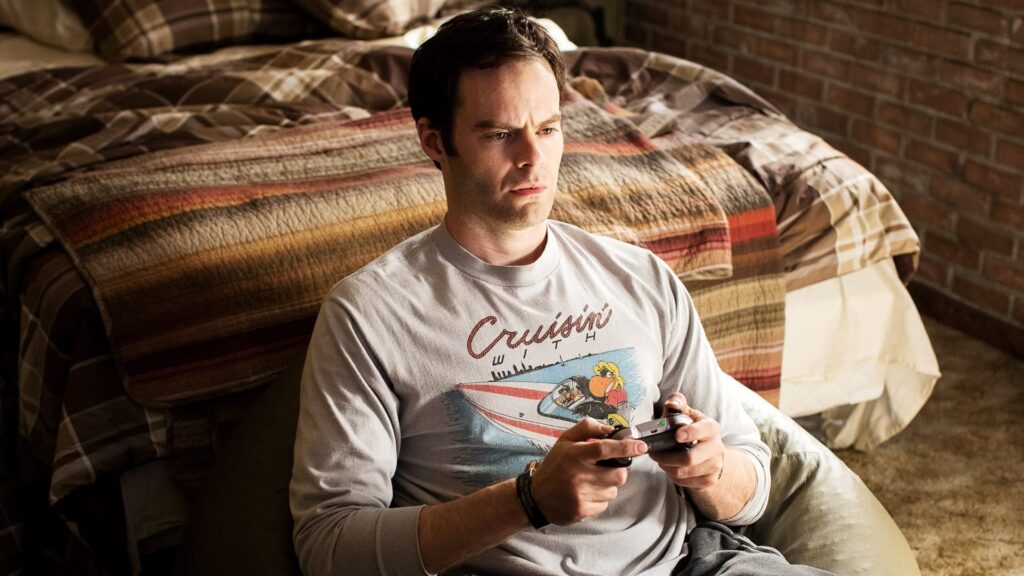
One of the most distinctive musical elements of Barry is its use of classical music. The show often employs pieces by composers like Bach, Mozart, and Beethoven to underscore the dramatic tension of certain scenes. For example, in one of the show’s most memorable sequences, Barry uses a classical piano piece to time his movements as he tries to evade detection by the police.
In addition to classical music, the soundtrack to Barry also features a number of contemporary tracks that help to establish the show’s modern, edgy vibe. The show features a wide range of genres, from hip-hop to punk rock, and each song is carefully selected to match the tone of the scene.
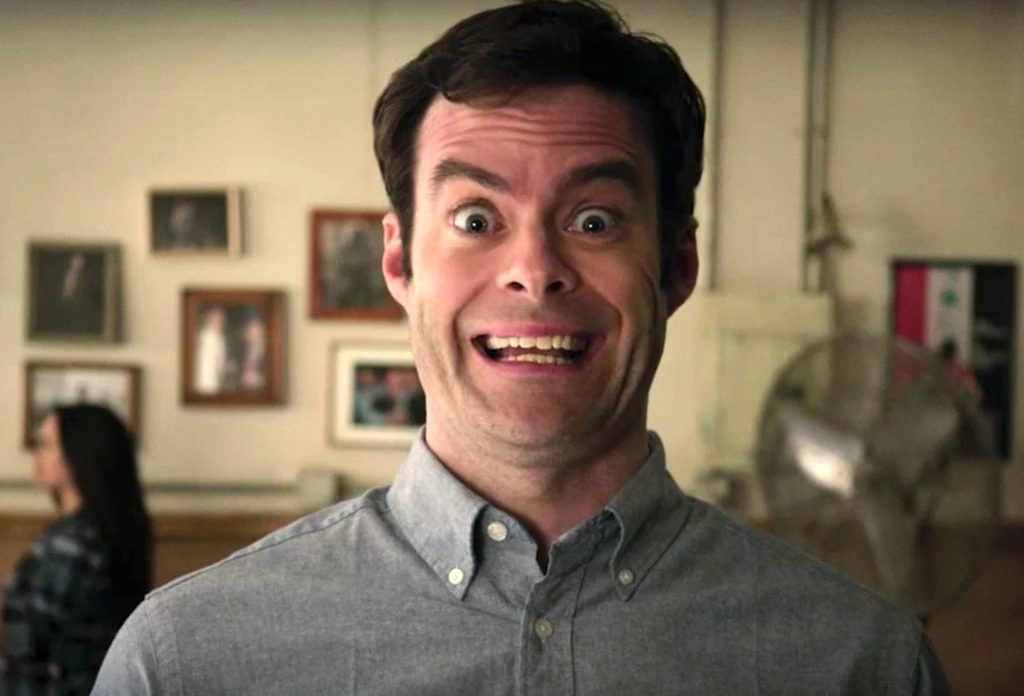
One of the most notable examples of the show’s use of contemporary music is its opening credits sequence, which features a song called “Change Your Mind” by the British band The Arcs. The song’s funky, driving rhythm and catchy chorus perfectly capture the show’s offbeat, irreverent tone, and it has become one of the most recognizable elements of the show.
Below are some songs featured in the series.
The Cast of Barry
- Bill Hader as Barry Berkman / Barry Block – A former United States Marine turned hitman who discovers a passion for acting while on a job in Los Angeles.
- Stephen Root as Monroe Fuches – Barry’s handler and mentor who teaches him the ropes of being a hitman.
- Sarah Goldberg as Sally Reed – A struggling actress and Barry’s love interest.
- Anthony Carrigan as NoHo Hank: A Chechen gangster and one of Barry’s associates.
- Henry Winkler as Gene Cousineau: An acting coach and teacher who becomes a mentor to Barry.
- Glenn Fleshler as Goran Pazar – A Serbian gangster and one of Barry’s targets.
- Paula Newsome as Detective Janice Moss – A police detective who is investigating the murders committed by Barry.
- D’Arcy Carden as Natalie – An actress and one of Sally’s friends.
- Kirby Howell-Baptiste as Sasha Baxter – An actress and one of Sally’s friends.
- Andy Carey as Eric – A fellow student in Gene Cousineau’s acting class.
The Filmmakers of Barry
- Bill Hader – Creator, Executive Producer, Writer, Director, and Lead Actor
- Alec Berg – Creator, Executive Producer, Writer, and Director
- Aida Rodgers – Co-Executive Producer
- Emily Heller – Co-Executive Producer and Writer
- Liz Sarnoff – Co-Executive Producer and Writer
- Duffy Boudreau – Producer
- Henry Winkler – Producer
- Maggie Carey – Director
- Hiro Murai – Director
- Minkie Spiro – Director
- Liza Johnson – Director
- Bill Benz – Director
- Jennifer Arnold – Director

Chicken A La King

Inspiration
Gene’s love for Chicken A La King


